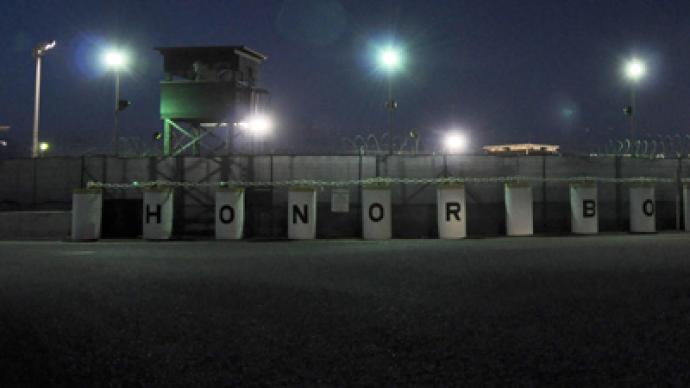9/11 suspects' lawyers demand CIA 'black sites' to be preserved as evidence

Self-confessed 9/11 mastermind Khalid Sheikh Mohammed and four other defenders claim they were tortured in Guantanamo, prompting their lawyers to call for the preservation of the CIA secret prisons to use them as evidence.
The pretrial hearing for the suspected terrorist conspirators began Monday. Facing the death penalty for their involvement in the deadly attacks that killed 2,976 people on September 11, 2001, the five prisoners are making a last-ditch attempt to reduce sentence by describing their torture experiences at the Guantanamo Bay US Naval Base.Mohammed previously accused the US government of killing millions of people and employing inhumane torture procedures “under the name of national security.” Attorneys representing the defendants are now calling for the judge to demand the preservation of the CIA “black sites” to use as evidence in the case against the US government. If the attorneys are able to prove that any of the evidence against the conspirators was obtained through torture, then this evidence may be excluded during the trial and lead to reduced sentences.The defense team has also asked the judge to order the US government to give all White House and Justice Departments documents about the CIA’s handling of the prisoners to the defense. The agency moved its al-Qaeda prisoners across borders to the Guantanamo prison after the 9/11 attacks and questioned them without a judicial review. Documents regarding the actions of the intelligence agency have not yet been made available to the defense.This week’s pretrial hearing is “the first step toward finding what happened in the torture of these men,” James Connell, an attorney for Ali Abdul Aziz Ali, an accused 9/11 conspirator and nephew of Mohammed, said in a press conference on Sunday.Mohammed and the other defendants will argue that they were subjected to torture including waterboarding, sleep deprivation, and threats. The prisoners were allegedly also forced to endure painful positions while having their arms and legs tightly chained.The preservation of the “black sites” could open the doors for investigation and analysis regarding the treatment of its inmates.“If a person is in isolation,” Connell argues, “how that isolation is enforced is a relevant legal factor as to whether they’ve been illegally punished, and the building design is relevant to that.”The legality of torture is negated by the Geneva Convention and the UN Convention Against Torture, and its practice is illegal in the US. The CIA has not always been opposed to torturous interrogation techniques, but their implementation was allegedly reduced in 2004 and banned after President Obama took office.The team of defense lawyers in the 9/11 case will attempt to have some of their defendants’ charges dismissed by bringing up the misconduct that the CIA may have committed in torturing the detainees."By its nature, torture affects the admissibility of evidence, the credibility of witnesses the appropriateness of punishment and the legitimacy of the prosecution itself," the defense lawyers wrote in court documents.Ordering the preservation of a CIA “black site” is difficult, but not impossible: in 2004, the judge overlooking the 9/11 trial ordered the Abu Ghraib prison in Iraq to be preserved as a crime scene – even though Iraq was still under US occupation.It is unclear whether the black sites are at risk of destruction, and in an interview with Wired, Connell said he can “neither confirm nor deny that”, but that the defense should have access to the evidence.“If the government wants to go forward with a case seeking the death penalty against these men, it has to make the evidence which may still exist available to them,” Connell says. “If they will not make relevant evidence available, the law suggests the prosecution cannot go forward with the case. ”













